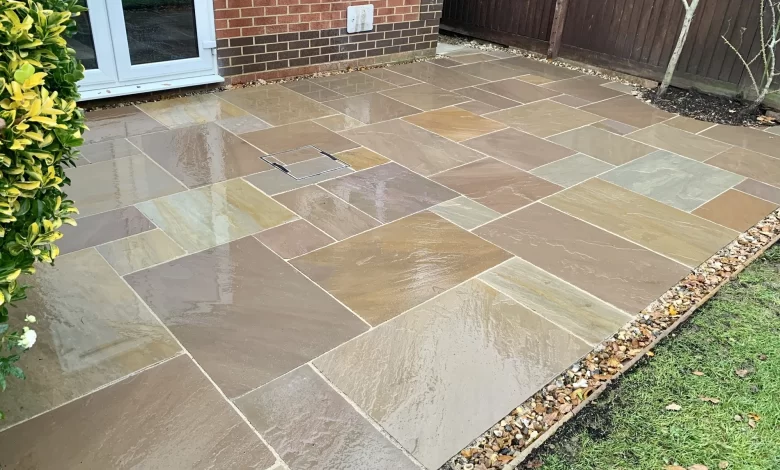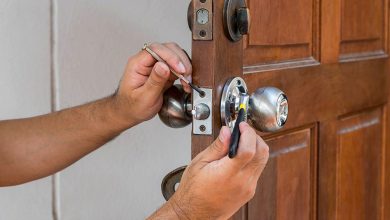Reviving Your Outdoor Spaces: Power Washing Techniques for Different Patio Types

Power washing, also known as pressure washing, is a highly effective method for cleaning and revitalizing outdoor spaces, especially patios. Over time, patios can accumulate a layer of dirt, grime, algae, and other unsightly stains that can detract from their appearance and even cause damage if left untreated. Power washing utilizes high-pressure water spray to remove these unwanted substances, restoring the beauty of patio surfaces and extending their lifespan.
Introduction to Power Washing Patios
This process not only enhances the aesthetic appeal of your outdoor living areas but also contributes to a healthier, safer environment by eliminating slippery moss and potentially harmful mold growth. With the advent of various power washing equipment and techniques, it’s crucial to understand the best practices for different patio materials to ensure effective cleaning without causing damage. This article will guide you through the essentials of power washing techniques tailored for concrete, paver, wood, and natural stone patios, covering everything from preparation to aftercare. Whether you’re a DIY enthusiast looking to maintain your patio or considering professional services, these insights will help you achieve the best results, revitalizing your outdoor spaces for enjoyment and relaxation.
Understanding Different Patio Materials
The key to effective power washing lies in recognizing the unique characteristics and cleaning requirements of various patio materials. Each material, from concrete and pavers to wood and natural stone, reacts differently to high-pressure water, necessitating tailored approaches to avoid damage while ensuring thorough cleaning.
Concrete Patios: Concrete is a sturdy, versatile material, making it a popular choice for patios. However, its porous nature means it can easily harbor dirt, oil, and other stains. Special attention is needed to remove these without eroding the surface.
Paver Patios: Made from brick, concrete, or natural stone, pavers add a decorative element to outdoor spaces. The gaps between pavers can accumulate weeds and debris, requiring precise pressure settings to clean effectively without dislodging the pavers or damaging the grouting.
Wood Decks: Wood offers a natural, warm aesthetic but requires careful handling during power washing to prevent splintering and water damage. The pressure setting and cleaning direction are critical to preserve the integrity of the wood grain.
Natural Stone Patios: Natural stone, including slate, flagstone, and limestone, provides a unique, elegant look but varies greatly in porosity and hardness. Some stones are more susceptible to etching or discoloration from harsh cleaning agents or incorrect power washing techniques.
Understanding these materials’ specific needs will guide the selection of the right power washing methods, including the appropriate pressure settings, nozzles, and cleaning solutions, to enhance their durability and appearance. Properly adjusting your approach based on the patio type not only ensures a clean, revitalized surface but also prevents damage that could lead to costly repairs.
Preparation Steps for Power Washing
Before embarking on the power washing process, proper preparation is essential to ensure safety and protect your patio from potential damage. These steps serve as a universal foundation, regardless of the patio material in question.
Safety First: Always wear protective gear, such as goggles and gloves, to safeguard against flying debris and the high-pressure water stream. Ensure that the power washer is in good working condition and familiarize yourself with its operation before starting.
Clear the Area: Remove furniture, grills, planters, and any decorative items from the patio. This not only prevents damage to your belongings but also allows unobstructed access to the entire surface for a thorough clean.
Sweep and Inspect: Sweep the patio to remove loose dirt, leaves, and other debris. Inspect the surface for any cracks, loose pavers, or damaged wood planks to address these issues beforehand or adjust your cleaning technique accordingly to avoid worsening the problem.
Choose the Right Equipment: Select a power washer with the appropriate pressure settings for your patio material. Using a washer with adjustable pressure is beneficial, as different materials require different levels of pressure. Attachments like rotating or fan nozzles can also enhance cleaning efficiency while minimizing the risk of damage.
Pre-Treat Stains: For stubborn stains, such as oil on concrete or mildew on wood, pre-treating the area with a suitable cleaning solution can improve the power washing results. Ensure the cleaner is compatible with your patio material to avoid discoloration or damage.
Wet the Surface: Lightly moistening the patio with water before applying high pressure can help loosen dirt and make the cleaning process more effective.
Power Washing Techniques for Concrete Patios
Select the Right Pressure Washer and Nozzle: For concrete, a pressure washer with a rating of at least 3000 PSI (pounds per square inch) and a flow rate of around 4 gallons per minute is ideal. Use a 15-degree nozzle to start, as it offers a balance between coverage and cleaning power without being too harsh on the concrete surface.
Apply a Degreaser (If Necessary): For areas with oil stains or heavy soiling, apply a degreaser before power washing. This helps break down the grease and oil, making it easier to wash away. Ensure the degreaser is suitable for use on concrete surfaces.
Use the Correct Technique: Begin washing from one end of the patio, moving systematically to ensure even cleaning. Keep the nozzle about 12 to 18 inches away from the surface and use a sweeping motion. Overlapping each pass slightly helps avoid streaking. For stubborn stains, you may need to make several passes or use a nozzle with a narrower spray pattern for more intense pressure.
Consider a Surface Cleaner Attachment: For large patios, a surface cleaner attachment can be very efficient. It covers a wider area and provides consistent cleaning by spinning water jets at a high speed. This reduces the cleaning time and minimizes zebra striping or streaks.
Rinse Thoroughly: After you’ve removed the dirt and stains, rinse the patio thoroughly with clean water to remove any residual cleaner or debris. This step is crucial for preventing any chemical buildup that could damage the concrete over time.
By following these steps, you can effectively clean your concrete patio with power washing, improving its appearance and longevity. Always remember to wear protective gear and follow the manufacturer’s instructions for your pressure washer to ensure safety during the process.
Caring for Paver Patios: Power Washing Insights
Caring for paver patios through power washing requires a delicate balance to remove dirt and stains without dislodging the pavers or harming the joint sand. Here’s a focused guide to help you achieve optimal results:
Choose the Appropriate Pressure Washer: A pressure washer with a capability of 2000 to 3000 PSI is suitable for most paver materials, offering enough power to clean effectively without causing damage. It’s important to select a washer that allows you to adjust the pressure as needed.
Select the Right Nozzle: A 25-degree nozzle is generally a good choice for paver patios, as it provides a wider spray that is effective for cleaning but less likely to disturb the sand between pavers.
Pre-Cleaning Preparation: Begin by removing furniture and other items from the patio. Sweep the pavers to remove loose debris. If weeds are present between the pavers, consider removing them manually or using a weed killer several days before power washing.
Apply a Cleaning Solution (If Needed): For heavily soiled pavers, applying a cleaning solution formulated for pavers can help break down tough stains and algae. Make sure to follow the manufacturer’s instructions for application and rinsing.
Power Washing Technique: Start washing at a low pressure, gradually increasing as needed to effectively clean the pavers without dislodging them or the joint sand. Keep the nozzle at least 12 inches from the surface and use a sweeping motion to clean. Avoid directing the water jet at the joints to prevent washing away the sand.
Dealing with Joint Sand: If the power washing process removes significant amounts of joint sand, it may be necessary to re-sand the pavers. Once the patio is dry, spread new joint sand over the surface, sweeping it into the gaps. Then, gently mist the area with water to help settle the sand, repeating as necessary until the joints are fully replenished.
By adhering to these insights, you can maintain the beauty and integrity of your paver patio, extending its lifespan and enjoyment for years to come. Power washing, when done correctly, is a key component of paver patio care, effectively combating dirt and wear while preserving the patio’s overall aesthetic.
Eco-Friendly Power Washing Solutions
Incorporating eco-friendly practices into power washing is essential for protecting the environment while cleaning your outdoor spaces. Traditional cleaning agents may contain harsh chemicals that can harm plants, animals, and the water supply. Here’s how to adopt greener cleaning methods for your power washing projects:
Choose Biodegradable Cleaners: Opt for cleaning solutions that are biodegradable and environmentally friendly. These cleaners are designed to break down naturally without leaving harmful residues behind. Look for products specifically labeled as safe for use in outdoor cleaning and that do not contain phosphates, bleach, or other harsh chemicals.
Make Your Own Cleaning Solutions: For a DIY approach, you can create effective cleaning solutions with common household items. A mixture of water, white vinegar, and a small amount of eco-friendly dish soap can be effective for general cleaning. For tougher stains, baking soda can be added to the mix to create a gentle abrasive. These natural ingredients are safe for most surfaces and won’t harm the environment.
Use Hot Water Power Washing: Some power washers are equipped with heaters that raise the water temperature, enhancing its cleaning power. Hot water can often reduce the need for chemical cleaners by effectively loosening dirt and grime. This method is particularly useful for grease and oil stains on concrete surfaces.
By adopting these eco-friendly power washing solutions, you can maintain clean and attractive outdoor spaces without compromising the well-being of the environment. These practices not only contribute to a healthier planet but also align with a growing preference for sustainable and responsible home maintenance methods.




